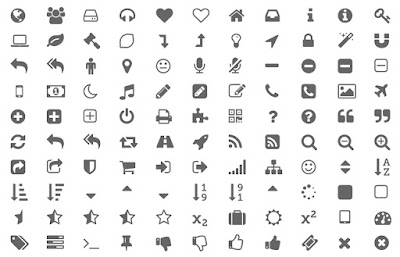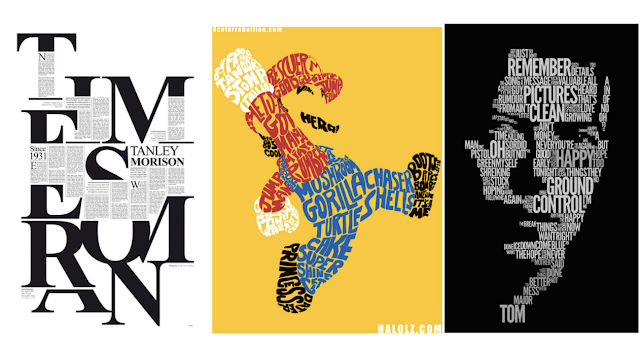Week 01 - Introduction to Design Principle
04/01/2022-06/01/2022 - Week 1
Tan Pei Yun (0345386)
Design Principle
Introduction To Design Principle
Lectures Notes
Week 1 (04/01/2022) Introduction/ Briefing
During the first class of Design Principle , we were briefed on the module and had an ice-breaking session with the class. The first lesson covered with element and principle of design . I particularly enjoy the section "Visual are what the eye see" in which Dr.Charles discusses about how powerful in visual design & understanding.
Visual design will draw our attention to the important aspects and strikes a balance between a fresh, powerful design and something we expect to see. As a result, every element of a design such as colours, shapes, patterns, typography, and so on. It carries a visual weight. Some elements are heavier and draw our attention, whereas others are lighter. With the smallest and subtlest details will easily affect our thoughts and feelings.
Element and Principle of Design,Contrast And Gestalt Theory
Topic 1.1 : Element And Principle of Design
Topic 1.1 : Element And Principle of Design
Element of design
- Points/Dots - a point of focused attention
- Lines - to create divisions, textures and shapes
- Shape (geometric/organic/abstract) - to create enclosed/self-contained areas
- Form - the shape and structure of something as distinguished from its substances or material
- Texture - to define an object's surface and represent how an object appear or feels.
- Space - enlarging or reducing visual space, creates a form within the space
- Colour/Value -set the theme/tone to attract attention , to set the relationship between lightness and darkness through a light source to create shadows and highlights
Principles of design
- Balance - to equally distribute elements evenly to create a sense of stability
- Contrast- noticeably different / differences in colour , to accentuate elements
- Emphasis - the focal point that feature in a design that attracts one's eye
- Movement - flow or feeling of action
- Repetition / Pattern / Rhythm - repeating the same colours , typefaces, shapes or other elements of design
- Hierarchy - use placement, font and so on to show importance of elements within a design. The most important elements should appear to be most important.
- Unity - to establish harmony, ensure concepts are being communicated in clear
- Alignment - creates a sharper, more ordered design to creates a visual connection with each other
- Harmony - define as sameness , repetition of design element like colour, texture, shape and form to achieve harmony to create a composition
- Proportion - comparative relationships between elements in a design with respect to size
Topic 1.2 : Gestalt Theory
Gestalt (Perception) of design
- Gestalt Theory -gestalt refers to the concept that the whole "togetherness" or "form" is greater than the sum of its individual parts
- Principle of Closure (Completion) -uses that human eye's tendency to see closed shapes , fill in blanks to perceive a complete object
- Principle of Proximity (grouping)- things which are closer together will be seen as belonging together
- Principle of Similarity - share the visual characteristics such as shape, size, colour, texture, value will be as seen as belonging together
- Principle of Continuity - predicts the preference for continuous figures, which affected by similarity and proximity
- Figure Ground - "figure" is the focal image , "ground" is the background image
Topic 2 : Emphasis And Balance
Emphasis
Emphasis creates a focal point in a design composition , which how it bring attention to what is important in it, it is the focus of attention and interest within a composition.
 |
| Figure 5. 1 Type of Emphasis |
- Focal Point
- Centre of interest
- Captures viewer attention where our eyes move to or see first
- Concerned with dominance
- Colour , Shape, Size and dominance, Detail, Contrast, Isolation
Balance (symmetrical / asymmetrical)
Balance
The visual equalization of elements in a work of design to create stability. Balance can be implied by size, shape, or even contrast.
Symmetrical balance
Can be called "formal balance".The design elements in a composition are balanced in a mirror-like
Asymmetrical balance
Can be called "Informal balance". Equilibrium is achieved by the balance differences in the design elements within a composition
Topic 3 : Repetition And Movement
Repetition
Repetition
Repetition is a way of combining design elements so that the same elements are used over and over to achieve balance and harmony
Movement
Movement
Movement is the design principle that uses some of the element of design to produce the look of action or to cause the viewer's eye to sweep over the design work in certain manner.
Topic 4 : Harmony (Unity & Variety)
Harmony
The visual quality of the "wholeness" or "oneness" that is achieved through effective use of the elements of design and principle of design
There are 2 types of harmony :
- When elements in a design look as though they belong together
- Unity is synonymous with Harmony
- Unity can exist with either representational (images that look like something) imagery or abstract forms
Variety
"Life is not always orderly or rational" , excessive variety can become unity in art and is used to create visual interest. Without variety, a design can very quickly become monotonous ,causing the user to lose interest
Variety can be use in :
- Shapes
- Sizes
- Colours
- Patterns
- Typography
- Images
- Other Design Elements
Topic 5 : Symbol,Image And Word
Symbol
Symbol is a combination graphic elements that represent concepts or ideas and help to connect with the audience in order to convey a clear message. Each symbol has its own significance and it can be categorise in :
- Figurative Representations
- Non-figurative Representations
- Visual
- Graphic symbols (Pictorial symbols ,Abstract symbols, Arbitrary symbols)
Pictorial symbols - Symbol in simplified pictures
Abstract symbols - Less Details , they are not concrete or tangible
Arbitrary symbols - No direct relationships to objects or idea they represent and mostly based on geometric shapes and colours
Image
"An image is worth a thousand words." Image is an highly effective communications tools that helps to create a connection with the text and clarify the information to the audience
There are different types of images :
- Photographs
- Illustrations
- Drawings
- Graphics
Word
Typography plays an important role in how audiences perceive the design and its information, word can creates relationship between different types of information , both organizing the information and keeping interesting in design
Instructions
Exercise (04/01/2021)
Figure Ground Exercise
Before we end our first class , Dr Charles gave us a figure ground exercise in which we began to sketch our own monogram with our alphabet name. I decided to go by my surname "Tan" / letter "T".
 |
| Figure 10.1 Figure ground exercise / final outcome |
Reflection
Week 1 (Friday , 07/01/2022)
I still remember Dr Charles saying during the first class that there's no right or wrong when it comes to design world. Design is totally amazing , it controls our emotion and visual. Our eyes enjoy arranging, organizing , observing and read visual. Just as we adore beautiful skies .By learning all the element design and principle of design ,we should aim to understand how each of them actually impact their work.
It does took me awhile to digest all of the design principles that we had learned, So I tried to make it as simple as possible while reading through other sources and writing it down in short and clear sentence into my blog , just in case I needed to refer it again in the future.
Jumplinks
Sources / Further Reading
Figure 1. Principle of Design , https://www.behance.net/gallery/132704647/7-principles-of-graphic-design
Figure 2. Element of design , https://www.thoughtco.com/what-are-the-elements-of-art-182704
Figure 3. Principles of Design , https://www.wix.com/blog/2018/07/7-principles-of-design-websites/
Figure 4. Gestalt theory , https://uxplanet.org/gestalt-principles-in-ux-design-2e0f423bfcb5?gi=9fb88f09c656
Figure 5. Emphasis https://www.invisionapp.com/defined/principles-of-design
Figure 5. 1 Type of Emphasis
Figure 6. Balance (symmetrical / asymmetrical)https://www.invisionapp.com/defined/principles-of-design
Figure 7. Repetition https://www.invisionapp.com/defined/principles-of-design
Figure 8. Movement https://www.invisionapp.com/defined/principles-of-design
Figure 8.1. Types of Movement https://artclasscurator.com/principles-of-design-examples/
Figure 9. Unity And Harmony https://www.invisionapp.com/defined/principles-of-design
Figure 9.1Types of variety https://artclasscurator.com/principles-of-design-examples/
Figure 10 Figure Ground Exercise , Week 1 , Design Principle
Figure 10.1Figure ground exercise / final outcome
Figure11. Images https://www.creativebloq.com/features/graphic-design-history
Figure 12. Example of typography poster https://www.shillingtoneducation.com/blog/what-is-typography/


















Comments
Post a Comment